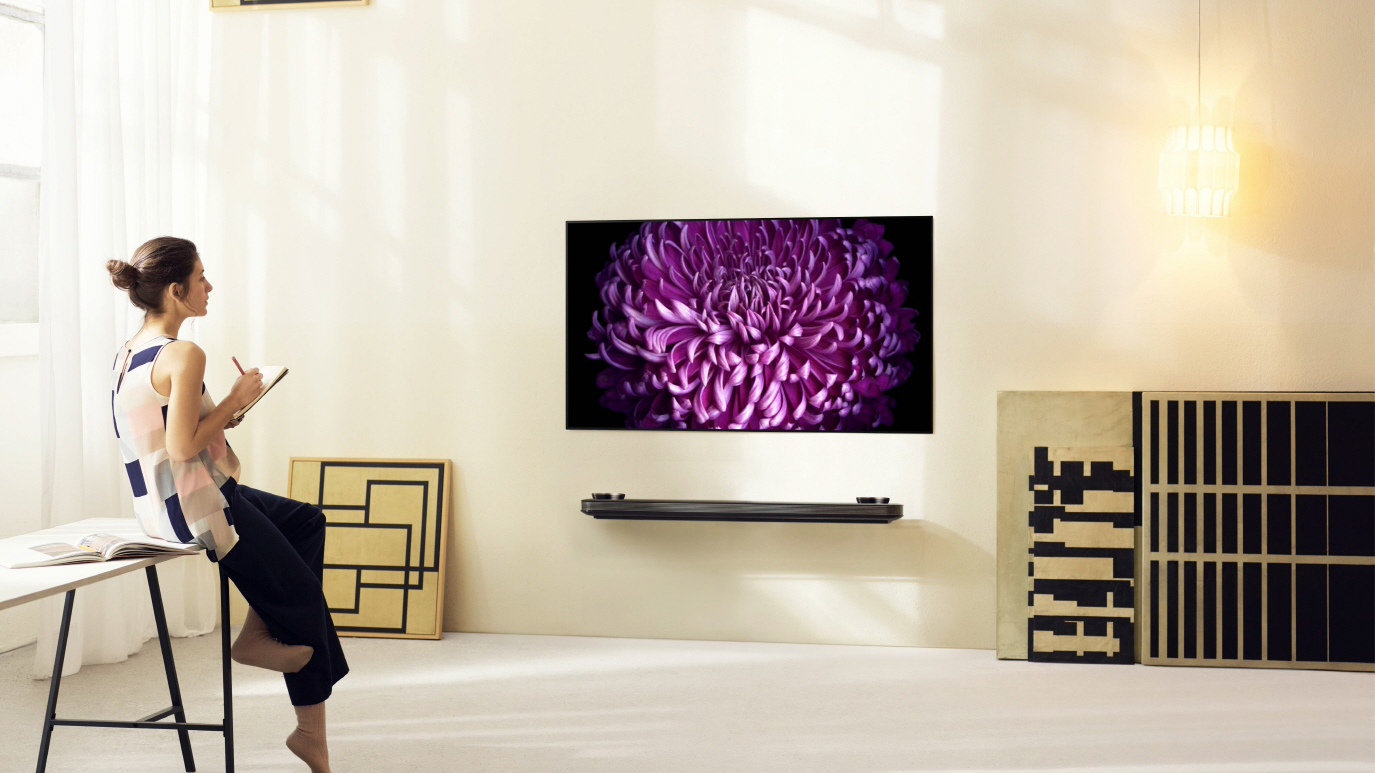No filler, no gimmicks, TVs got great again at CES 2017
Bye bye 3D and so long curves

By all accounts, CES 2017 has been a great year for televisions. Sony finally re-entered the OLED race with the exceptional Sony Bravia A1E, Panasonic showed off the versatile Panasonic EZ1002, and LG absolutely stunned us with the wallpaper-thin LG OLED W7 Signature Series.
But what’s been even more impressive is that this year we’ve seen most of the gimmicks that have dominated the TV space in previous years almost completely disappear.
In particular, 3D TVs have completely died off, and curved sets have gone from being the hot new thing to a niche technology for diehard fans.
Farewell 3D my old friend
No one really expected 3D televisions to have too much of a presence at the show this year. After all, the technology has been notably absent from CES for a couple of years now after 3D Blu-rays and TV broadcasts failed to take off.
But with 3D films still a regular fixture in most movie theatres it’s nevertheless surprising that 3D TVs have died quite as thoroughly as they have done.
It’s a similar story when it comes to curved TVs. Once touted as a means of making images seem more immersive and increasing their field of view, the technology seems to have found more of a home in computer monitors, where they provide huge benefits to ultra-wide screens.
Curved TVs haven’t disappeared entirely. Samsung still had a curved TV on display, the Q8C, but other manufacturers who have embraced the curved form-factor in the past, such as LG, didn’t have any curved sets on display this year.
Get daily insight, inspiration and deals in your inbox
Sign up for breaking news, reviews, opinion, top tech deals, and more.
This could all change of course as the various television manufacturers announce their mid-range options, but for now 2017 is looking like a flat (non-curved) year for TVs.
Tech that matters
Instead, TV manufacturers have been packing their TVs full of technology that actually matter, and the result has been an incredebly interesting year for televisions.
LG has embraced both of Dolby’s new high-end audio visual technologies, Dolby Atmos and Dolby Vision, with the W7 signature. More impressive however, is the TV’s form factor, which finally delivers on the thinness promised by OLED by outsourcing the bulky internal electronics to an external soundbar.
Meanwhile, Panasonic’s EZ1002 OLED isn’t quite as thin, but has also saved space by relying on a detachable soundbar, which helps the panel portion of the TV remain as sleek as possible.
Both TV’s support the new HDR standard, Hybrid Log Gamma, which is the standard the BBC intends to use to broadcast HDR content in the future. If you’ve invested in HDR before now then there’s a chance you might not be able to watch HDR broadcasts when they are launched in the future.
CES 2017 also saw Sony make its long-awaited return to OLED televisions with the Sony Bravia A1E. Sony’s existing high-end Bravia sets already feature impressive image quality thanks to the company's image-processing technology, but the addition of an OLED panel has resulted in a very good looking set indeed.
It’s also capable of outputting its sound through the screen itself resulting in a bezel-free design which is a sight to behold.
Finally, Samsung might be sticking to its guns when it comes to supporting Quantum Dot over OLED, but it’s made some solid improvements to its set this year, which features a brighter screen and better viewing angles. This improvement is made more important by the fact that the company is continuing to push curved TVs, which suffer if viewing angles are poor.
Big steps, but not for everyone
Of course, CES remains the show where companies focus on their top of the range flagship models, and these are sets that will only ever make it into a tiny fraction of consumer’s homes.
The more meaningful test of TV tech will come as these companies flesh out their lineups with their mid-range and budget options, which are the sets that will make their way into the majority of consumers homes.
When it comes to these, it’s hard not to be disappointed that after all these years OLED TVs have still failed to reach a mass-market price point, and so too is it unlikely that we’ll see the likes of Dolby Atmos making it to budget sets anytime soon.
But if you’re someone that likes to invest in a high-end TV that will last you years, then 2017 might just be the year to do it. The new HDR standards that the industry will use are here and are being supported, and you’re unlikely to be surprised with the reveal of any new surround sound technologies in the immediate future.
The only problem now is price, and with many manufacturers keeping quiet about how much their flagships are going to cost, they’re unlikely to be cheap.
- Check out our guide to the best 4K TVs for some excellent screens you can buy right now.
Jon Porter is the ex-Home Technology Writer for TechRadar. He has also previously written for Practical Photoshop, Trusted Reviews, Inside Higher Ed, Al Bawaba, Gizmodo UK, Genetic Literacy Project, Via Satellite, Real Homes and Plant Services Magazine, and you can now find him writing for The Verge.
